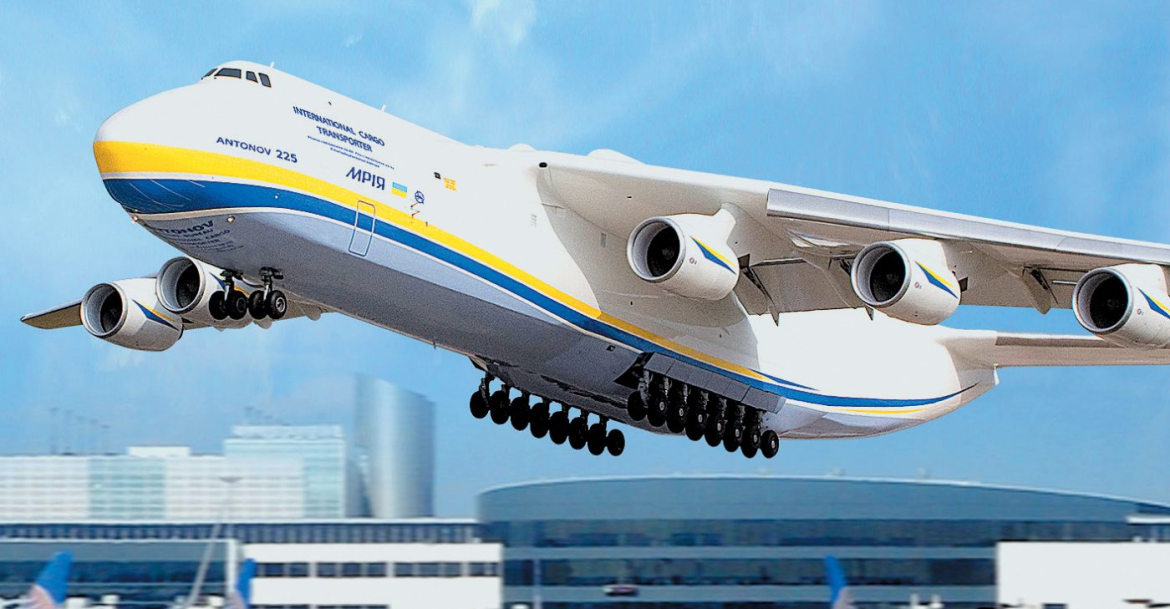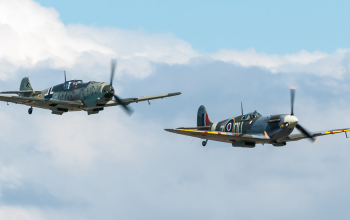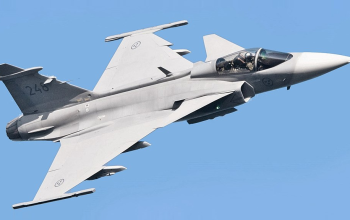Throughout history, humanity has progressed with engineering marvels and inventions that changed the fate of the world forever. With the rapid advance of technology in the early 20th century and the invention of prop planes, not only the war technology leapt forward, but the commercial market as well. Creations like De Havilland Comet has kickstarted the jet engine era for the aviation world and the Antonov An-225 Mriya demonstrated that size indeed matters. This is the story of an engineering marvel, the world’s largest plane, Antonov An-225 Mriya and its unfortunate fate in the hands of a man possessed.

The Birth of the Largest Plane
Developed as a massive strategic airlift cargo aircraft by the Soviet Union, the initial development plans and projects date back to 1980’s, being based on another cargo plane made by Antonov, the An-124. Designed to replace the large Myasishchev VM-T aircraft, the target maximum payload for An-225 was 231,838 kilograms (511,116 lb). The initial mission of the aircraft was to transport Buran-class orbiters, supporting the Soviet Space Program. As the Cold War history has shown us, however, it was another race against the United States, therefore, the airplane had to be completed as soon as possible. Viktor Tolmachev, the designer of the An-225 and Antonov Design Bureau rolled up their sleeves and extended the fuselage and enlarged the wings of An-124 and a pair of Progress D-18T turbofan engines were added to the original four. To eliminate the wake turbulence that loads might cause, a new wing was installed. The development and planning took four years and one An-225 was completed in 1988. A second An-225 was planned, but it was never completed. The plane not only had huge potential to become an integral part of the fleet, but it could also be a great propaganda tool for the Soviets, therefore, the ”Mriya”, translated to ”Dream” in Ukrainian, was to take its maiden flight soon after its completion.

The ”Dream” Rises
An-225 made its maiden flight on December 21, 1988 and made its public debut on 1989 Paris Air Show, carrying a Buran orbiter. Following its debut, it also appeared at Farnborough International Airshow in 1990. While its design was largely conventional and the overall design did little to stand out, its sheer size immediately got the attention of the press worldwide. This engineering marvel was equipped with large anhedral wings and a landing gear with 32 wheels, some of which are steerable, allowing for more manueverability. The kneeling nose gear allows for an easier cargo loading procedure and four overhead cargo cranes that can carry 5,000 kg (11,000 lb) each illustrate the practicality of this brute. Since An-225 was not designed for short-field operations and airlifting, the rear cargo door and ramp are absent. The cargo hold is 1,300 m3 (46,000 cu ft) in volume, 6.4m wide, 4.4m high and 43.35m long. It can easily hold up around 80 cars, more than 10 containers and 250,000 kg (551,150 lb) of miscellaneous cargo. The maximum gross weight of An-225 is 640 tonnes and can reach speeds up to 850 km/h (528 mph) which is an impressive feat for the heaviest plane ever made and the massive six engines allow the behemoth to fly long distances without stopping.

Operational History of An-225 Mriya
As stated before, the main objective of the An-225 was to transport orbiters. However, after the dissolution of Soviet Union, the Buran space programme was cancelled, the plane was stripped out of its purpose. In the early 1990’s, Antonov Airlines openly discussed the commercial use for the An-225, which was resting in a hangar with its engines removed to be used for other Antonov aircraft. However, it later became apparent that a large cargo aircraft that is bigger than an An-124 would be needed since there was enough demand. This signalled the resurrection of the one and only An-225, which was modernized and got its engines reassembled while being upgraded to carry enormous loads that would be impossible to transport with any other vehicle on earth, including locomotives or large generators and engines. It became an integral part of Antonov Airlines and also gained its distinctive livery with Ukrainian flag and name on the side in 2009.
The first commercial flight of An-225 was back in 2002 from Stuttgart, Germany to Thumrait, Oman, carrying over 200,000 meals for the American military personnel. An-225 quickly became the workhorse of Antonov Airlines, and it could deliver anything, no matter its size, to anywhere with a rather affordable cost of €266,000, well, if you are using such a large plane, trust me, you can afford it. An-225 also broke records as it carried four battle tanks weighing 253.82 tonnes in total in 2001 and flew on an attitude of 10,750 m (35,270 ft) with a speed of 763.2 km/h (474.2 mph). Lastly, it carried the world’s longest cargo, a wind turbine blade that is 42 m long in 2010. An-225 has also become a hero for the aviation world as it delivered medical supplies around the world after COVID-19 pandemic broke out.

The Destruction & Aftermath of An-225
Last flight of An-225 was from 2 to 5 February 2022 and its mission was to collect COVID-19 test kits from China and deliver to Denmark via Kyrgyzstan. After its return to Antonov Airport and its engine swap, NATO suggested its evacuation in 24 February but before the An-225 could take off, Russia invaded Ukraine and later Antonov Airport. The runway was destroyed and a couple of days later, pictures of a ravaged An-225 emerged in social media. It was later confirmed that the large plane was indeed destroyed during Battle of Antonov Airport. The tragic pictures show a heavily burned and gutted An-225 that’s reduced to ashes. Despite the loss of the finished An-225, it is reported that the second unfinished An-225 remained intact despite nearby attacks. Months later, Ukrainian president Volodymyr Zelenskyy stated that they will complete the unfinished An-225, not only resurrecting the legendary aircraft but also paying a tribute to the pilots that lost their lives during the conflict, with the cost claimed to be around $500 million. We hope that one day, we will see the second An-225 up in the air, continuing from where its dead brother left off.




